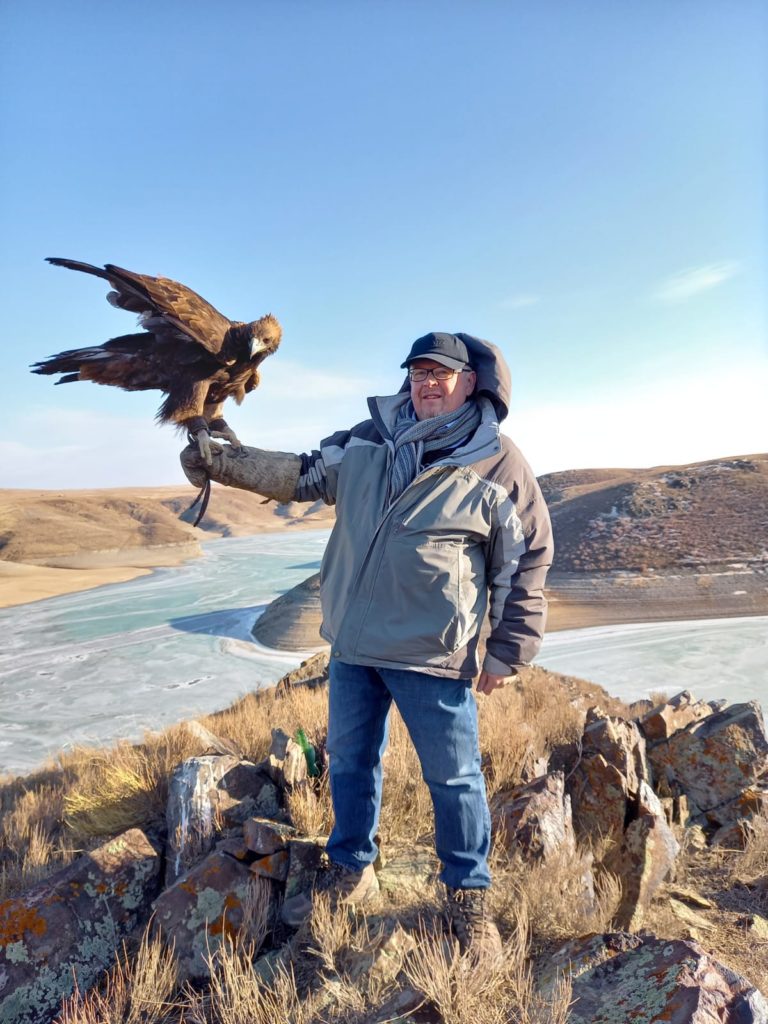
“KNOW THE CULTURE OF THE SOCIETY THAT YOU LIVING AND WORKING WITH”
INTERVIEW: BRUCE GASTON
OCA Magazine: Tell us, please, about yourself and your creative activity / work
Bruce Gaston: I am primarily a businessman and not as involved in the arts as I used to be. However, I still write articles for publication every year and enjoy going to art shows and cultural events. I particularly like finding local Eurasian and Central Asia historical stories of interest and culture that have never made it into the main published histories.
I remember meeting an old archaeologist who ran a two big yurt and one small yurt museum near Issyk. He said he had been sponsored by an Italian Prince to pursue local archaeology and set up his yurt museum to the history of the Issyk area. We spent the best part of the day visiting various sites, including the site of an ancient equestrian palace, several large stone circles, and a huge circle based on the features of the landscape, such as are found in Rennes la Chateau in France or near Glastonbury in England. I still have plans to visit the stone henge in the Tien Shan steppe hills above Issyk that the old archaeologist described.
OCA: How did you choose your path and who is your role model in the creative space or life?
BG: My path was chosen partly by fate and partly by choice. I ended up being introduced to Eurasia and Kazakhstan by my German brother-in-law, who’s wife is a sister to my own wife, Lidia. I fell in love with the people, culture, and history of the region. One of my favourite hobbies is ancient history. It is often said that Central Asia has little history, but the truth is quite the opposite if you look carefully. I bought a number of turn of the century history books on Central Asia from the collection of the representative to the Dalai Lama of the Budhist region of Buratia in Russia. These books are fascinating.
Artistically, my role mother has always been my mother, who is an artist. She has always been working on artistic pieces, whether sketches, oil paintings, multi-material pieces, sculptures (mostly metal), installations, and more recently stained glass. After she kept asking me to set up a show, the gallery Tengri Umi in Almaty took an interest and combined a show of my mother’s work and the annual master class festival. I believe this was the first show of a British artist in Kazakhstan sponsored by the British Arts Council.
I have spent over 20 years now in Eurasia, particularly Kazakhstan, and very much enjoy cultural events. My favourite time of year is Nauryz, when everyone emerges from Winter to enjoy spring. Historically, I was an active sportsman and since spending time in Central Asia I have started following some of the local cultural sports and Nomad games.
I have most recently been involved in a number of eagle hunting events and it has become a hobby. Though eagle hunting is a sport, it is also very much a Kazakh cultural activity. It is great to get out into the steppe, hiking for kilometres, while working with eagles.
OCA: What is your main achievement in 2021-2022?
BG: Artistically, my main achievement so far in 2021/22 is to write an article, published by OCA magazine, on Japanese chocolate and the start of St. Valentines day, based on the history of the Morozoff family. I am working on another article and I am beginning to put work into publishing a book.
OCA: What is the main feature that makes you and your art/work unique?
BG: I guess my work is unique partly because my experience in life is unique. I have had the pleasure of living in the UK as a child and banker in London, Canada as a teenager, Japan and Hong Kong as a banker, and Russia, Ukraine, and Kazakhstan as a corporate finance and business development advisor. I wasn’t just ‘working’ while working in these various locations, but also enjoying each culture and the many connections between them. The article that I wrote regarding Japanese culture was inspired by a meeting between my wife and the original inspiration for St Valentines day and chocolates in Japan, Valentine Morozoff. This meeting resulted in my researching the Morozoff family history and their contribution to what is now a key aspect of Japanese culture.
OCA: Tell us, please, about the events of the Eurasian Creative Guild (London) and projects that you have already taken part in and how does ECG influence your creativity and success in your work?
BG: I find that the Eurasian Creative Guild has inspired me to develop my artistic interests in a way that might otherwise not have happened. It is very easy for me to get buried in my work and I need all the help I can get to pursue more artistic and cultural interests.
OCA: What is your motivation and the main aim of your creativity?
BG: I have never worked just for money. I think I get this from my parents. For me, it is extremely important to get to know the culture and arts of the society that I am living and working with. I have always been creative, whether that is through my work or as a member of society.
OCA: What would you wish for the members of the Guild and other creative people, just starting their career?
BG: Luck, good fortune, and an enthusiasm for life!
